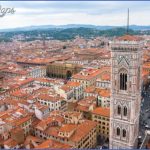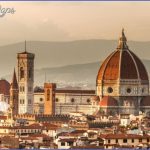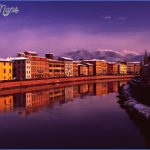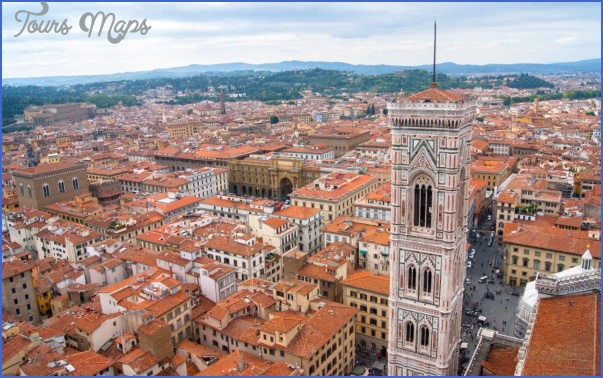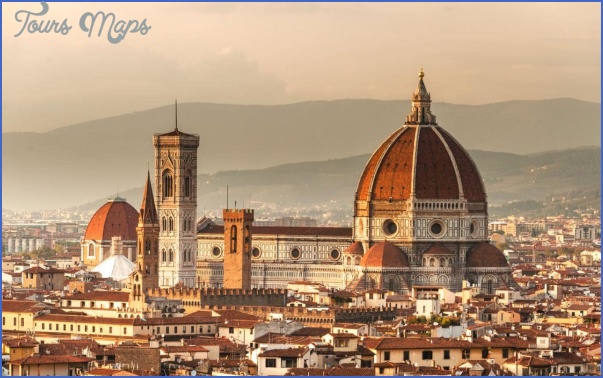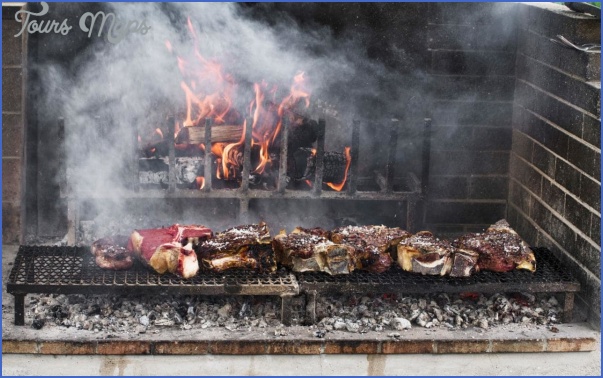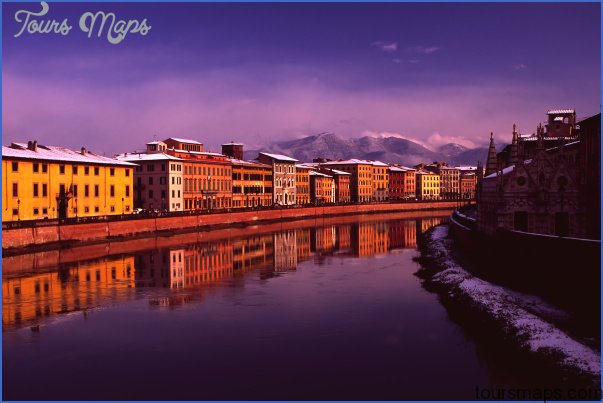SIGHTS
There’s enough to see in the center of Florence alone to keep a visitor occupied for years; if you’re in the city for only a few days, hit the highlights. Plan well, as the city’s art museums are spectacular, but exhausting and expensive. Florence’s museums run ‚3.10-8.50 per venue and no longer offer student discounts. In summer, watch for Sere al Museo, evenings when certain museums are free from 8:30-11pm. Also, many of Florence’s churches are treasuries of great art.
PIAZZA DEL DUOMO
THE DUOMO (CATTEDRALE DI SANTA MARIA DEL FIORE). The red brick of Florence’s duomo, the Cattedrale di Santa Maria del Fiore, at the center of P. del Duomo, is visible from virtually every part of the city. Filippo Brunelleschi drew from long-neglected classical methods to come up with his revolutionary doubleshelled construction that utilized self-supporting interlocking bricks in order to construct the enormous dome. The duomo claims the world’s third longest nave, trailing only St. Peter’s in Rome and St. Paul’s in London. (Open M-Sa 10am-4:45pm, Su l:30-4:45pm. Mass daily 7am-12:30pm and 5-7pm.) Climb the 463 steps inside the dome to Michelangelo’s lantern, which offers an unparalleled view of the city. (Open M-F 8:30am-7pm, Sa 8:30am-5:40pm. ‚6.) The 82m high campanile, next to the duomo, also has beautiful views. (Open daily 8:30am-7:30pm. ‚6.)
BATTISTERO. The battistero (baptistery) next to the duomo, built between the 5th and 9th centuries, was the site of Dante’s christening; its Byzantine-style mosaics inspired the details of his Inferno. The famous bronze doors were a product of intense competition among Florentine artists; Ghiberti was commissioned to forge the last set of doors. The products, reportedly dubbed the liGates of Paradise by Michelangelo, exchanged his earlier 28-panel design for 10 large, gilded squares, each of which employs mathematical perspective to create the illusion of deep space. Under restoration since a 1966 flood, they will soon be housed in the Museo dell’Opera del Duomo. (Open M-Sa noon-7pm, Su 8:30am-2pm. ‚3.)
MUSEO DELL’OPERA DEL DUOMO. Most of the duomo’s art resides behind the cathedral in the Museo dell’Opera del Duomo. Up the first flight of stairs is a late Pieta by Michelangelo, who, according to legend, destroyed Christ’s left arm with a hammer in a fit of frustration; soon after, a diligent pupil touched up the work, leaving visible scars on parts of Mary Magdalene’s head. The museum also houses four frames from the baptistery’s Gates of Paradise. (P. del Duomo 9, behind the duomo. Open M-Sa 9am-6:30pm, Su 9am-lpm. ‚6.)
ORSANMICHELE. Built in 1337 as a granary, the Orsanmichele was converted into a church after a great fire convinced city officials to move grain operations outside the city walls. Secular and spiritual concerns mingle in the statues along the facade. Within these niches, look for Ghiberti’s St. John the Baptist and St. Stephen, Donatello’s St. Peter and St. Mark, and Giambologna’s St. Luke. Across the street, the Museo di Orsanmichele exhibits numerous paintings and sculptures from the original church. (V. Arte della Lana, between the duomo and P. della Signoria. Museum open daily 9am-noon. Closed 1st and last M of the month. Free.)
PIAZZA DELLA SIGNORIA AND ENVIRONS
From P. del Duomo, the bustling Via dei Calzaiuoli, one of the city’s oldest streets, runs south through crowds and chic shops to P. della Signoria.
PIAZZA DELLA SIGNORIA. The destruction of powerful Florentine families’ homes in the 13th century created an empty space that cried out piazza! With the construction of the Palazzo Vecchio in 1299, the square became Florence’s civic and political center. In 1497, religious leader and social critic Savonarola convinced Florentines to light the Bonfire of the Vanities, a grand roast in the square that consumed some of Florence’s best art. A year later, disillusioned citizens sent Savonarola up in smoke on the same spot, marked today by a granite disc. Monumental sculptures cluster in front of the palazzo, including a copy of Michelangelo’s David. The awkward Neptune to the left of the Palazzo Vecchio so revolted Michelangelo that he insulted the artist: Oh Ammannato, Ammannato, what lovely marble you have ruined! The graceful 14th-century Loggia dei Lanzi, built as a stage for civic orators, displays world-class sculpture free of charge.
PALAZZO VECCHIO. Arnolfo del Cambio designed this fortress-like palazzo in the late-13th century as the governmental seat. It later became the Medici family home; in 1470, Michelozzo decorated the Ulcourtyard in Renaissance style. Inside are works by Michelangelo, da Vinci, and Bronzino. The Monumental Apartments, which house the palazzo’s extensive art collections, are accessible as a museum.
The Activities Tour, well worth the extra ‚2 (students ‚1) on top of the cumulative ticket, includes the Secret Routes, which reveal hidden stairwells and chambers, and Invitation to Court, a reenactment of court life. ( 055 276 84 65; tours 055 276 82 24. Call ahead for tour reservations. Monumental Apartments ‚6, ages 18-25 ‚4.50. Palazzo ‚5.70. Courtyard free. June-Sept M and F9am-llpm, Tu-Wand Sa 9am-7pm, Th and Su 9am-2pm; Oct.-May M-W and F-Sa 9am-7pm, Th and Su 9am-2pm.)
Hi THE UFFIZI. Vasari designed this palace in 1554 for the offices (uffizi) of Duke Cosimo’s administration; today, it houses more first-class art per square inch than any other museum in the world. Botticelli, da Vinci, Michelangelo, Raphael, Titian, Giotto, Fra Angelico, Caravaggio, Bronzino, Cimabue, della Francesca, Bellini, even Diirer, Rubens, and Rembrandt you name it, they have it. To avoid disappointment at the museum, note that a few rooms are usually closed each day and famous works often go on temporary loan, so not all works will be available for viewing. A sign outside the ticket office lists the sale that will be closed for the day; ask if they will reopen the next day. (Extends from P. della Signoria to the Arno River. 055 21 83 41. Open Su, Tu-Sa 8am-7pm. ‚8.50.)
PONTE VECCHIO. From the Uffizi, follow V. Georgofili left and turn right along the river to reach the nearby Ponte Vecchio (Old Bridge). The oldest bridge in Florence, it replaced an older Roman version in 1345. In the 1500s, the Medici kicked out the butcheries and tanneries that lined the bridge and installed goldsmiths and diamond-carvers instead. The view of the bridge from the neighboring Ponte alle Grazie at sunset is breathtaking, and the bridge itself buzzes with pedestrians and street performers, particularly at night.
Florence Travel Destinations Photo Gallery
Maybe You Like Them Too
- Explore Sasbach, Germany with our Interactive Map
- Explore Nevestino, Bulgaria with this Detailed Map
- Explore Pulau Sebang Malaysia with this Detailed Map
- Explore Southgate, Michigan with this detailed map
- Explore Les Accates, France with this Detailed Map

